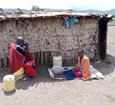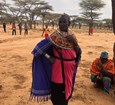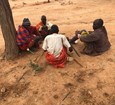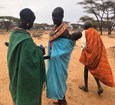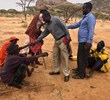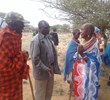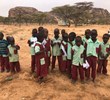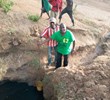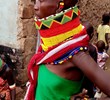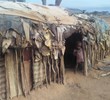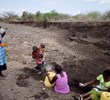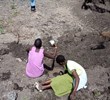The Maasai are being hit economically as the traditional markets where they trade their cattle are suspended due to COVID 19.
The Maasai are divided into three clans of people: Maasai, Samburu, and Ilechamus. They speak the MAA language.
THE MAASAI
The Maasai are semi pastoralists, enjoying living by herding cattle, goats, sheep, and camels. These are the Nilotic group inhabiting the Rift Valley. They are known by their distinctive customs and dress.
THE SAMBURUS
The Samburu tribe are Nilotic and inhabit the Kenya’s northern plains, they are the kin of the Maasai and speak the MAA language. They move from place to place following the patterns of rainfall in search of pasture and water for their cattle, goats, and sheep.
They are considered more traditional and remote than their Maasai kin and have maintained the authenticity of their culture by sticking to their ancient culture and refusing to accept modernization
DRESS
The Maasai dressing is similar to the Samburu, it is difficult to differentiate the two. Both Maasai and Samburu men and women dress in traditional Shukas which they wrap loosely around their bodies.
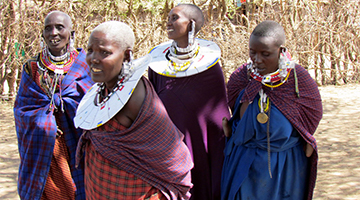
Traditional Maasai people.
BELIEFS
They believe in one supreme God called Ngai, NKAI who lives in the mountains.
FOOD
The traditional staple food of the Maasai people is meat and milk derived from goats and cattle. They often drink milk as blood drawn from the cow’s neck with an arrow
LANGUAGE
The Samburu tribe speak the MAA language as do their cousin Maasai. They both share their vocabulary, but Samburu speak rapidly than the Maasai.
SOCIAL LIFE
The Maasai people are polygamous due to their Nomadic lifestyle. Because raring cattle is their main activity, they must travel long distances in search for pasture them
Challenges
Water
Water: Water is still a challenge in many villages within the Maasai and Samburu villages. Children in most cases often walk an average of seven miles to get twenty liters of water once per week (Sunday). In many cases the source of water is found in unfavorable places as illustrated in the photo. Lack of clean and shortage of water often results in water borne diseases such as: Cholera, Typhoid, and Malaria.
Education
Education: There are only a few schools for Maasai and Samburu children to attend with no colleges. Both groups have been overlooked by both the Kenyan and Tanzanian government as far as investing in education. To make matters worse, due to the government, they are also losing much of their land.
AIDS
AIDS: According to the Telegraph (2004), traditional practices such as wife sharing, and polygamy have allowed the Aids epidemic to grow exponentially. The report also goes on to say when a woman is widowed, she often becomes the wife of her dead husband’s brother. This normally allows her economic survival, but in many cases where a husband died from the disease, the surviving wife passes it on to the new husband and he then passes it on to his other wives. The disease is often more prevalent within women.
How your gifts help?
Our first phase of assistance will be centered around clean water through wells. You Can help us achieve our goals with a generous gift towards any of the following:

1. GER DETECT
GER DETECT Fresh Result 2 Professional Underground Water Detector...
Learn More
Features: LONG RANGE WATER DETECTION. WATER FINDER: Scan all layers of the ground to a depth of 1,200 meters and a front range of up to 2,500 meters
Cost: 6,750 USD

2. Ford F350 Lariat
Will be used for transportation of equipment such as: pumps, etc.
Learn More
Will be used for transportation of equipment such as: pumps, water transportation, and site technicians for drilling boreholes.
Cost: Approximately 50,900 USD

3. Water Trailer
1000 Gallon Water Trailer – Will be used to deliver water to remote areas
Learn More
Will be used for transportation of water from sources to remote areas in Maasai and Samburu country.
Cost: 11,850 USD
Shipping: 1,550 USD

4. Vaccines for Malaria
1000 Vaccines for Malaria - Plasmodium falciparum is a unicelluar protozoan parasite...
Learn More
Plasmodium falciparum is a unicelluar protozoan parasite of humans, and the deadliest species of Plasmodium that cause malaria in humans. It is transmitted through the bite of a female Anopheles mosquito.
Cost: 11,850 USD
Shipping: 1,550 USD

